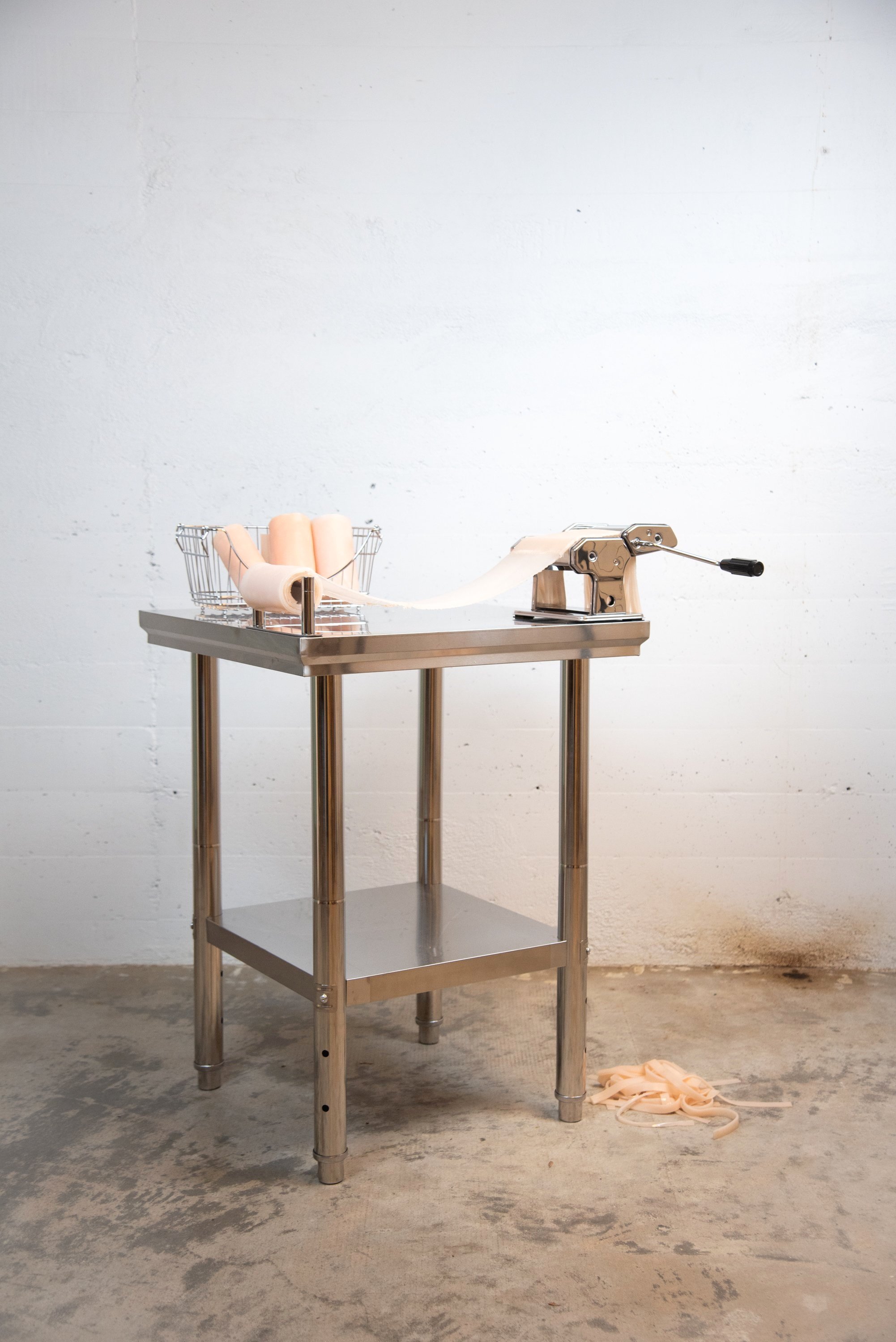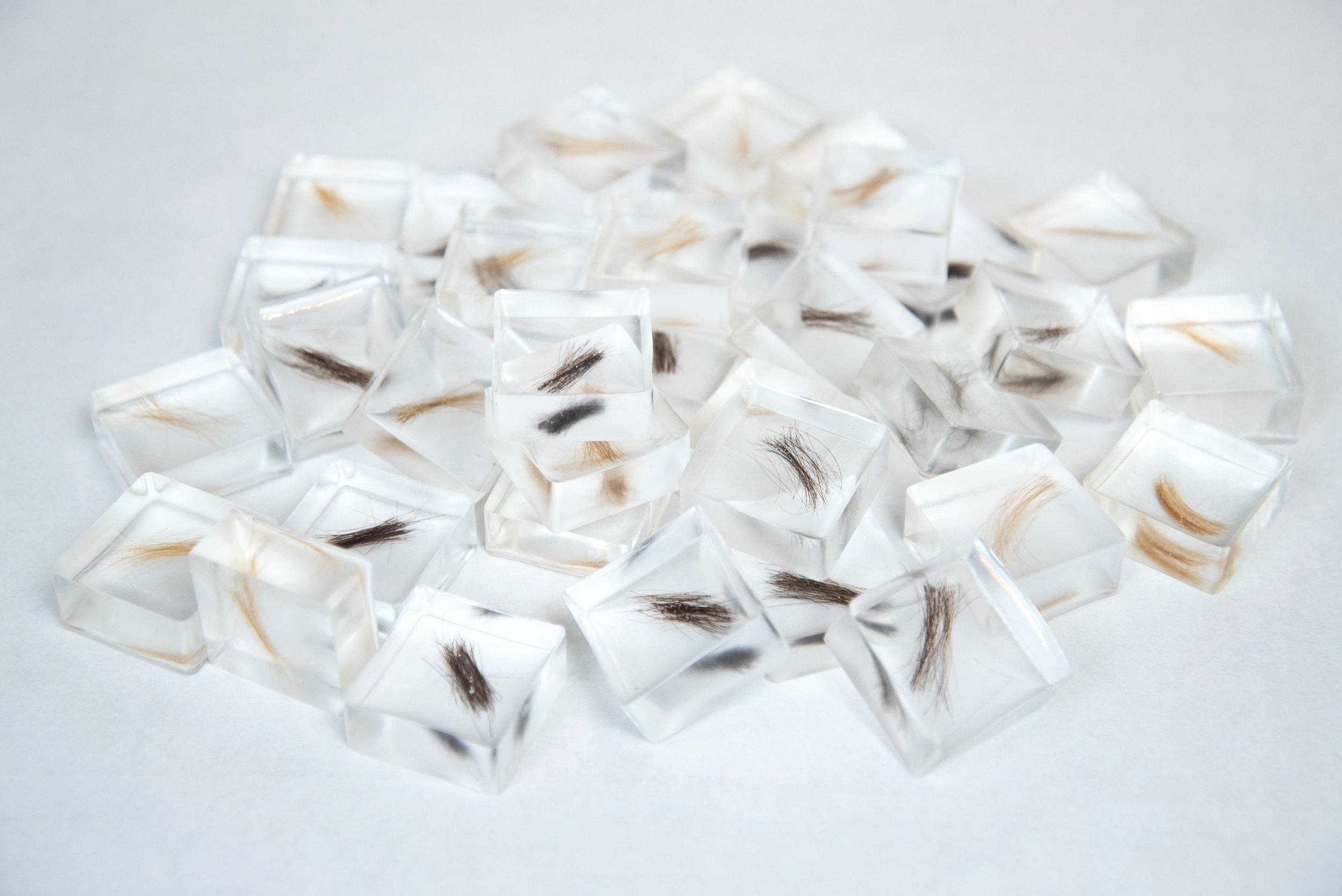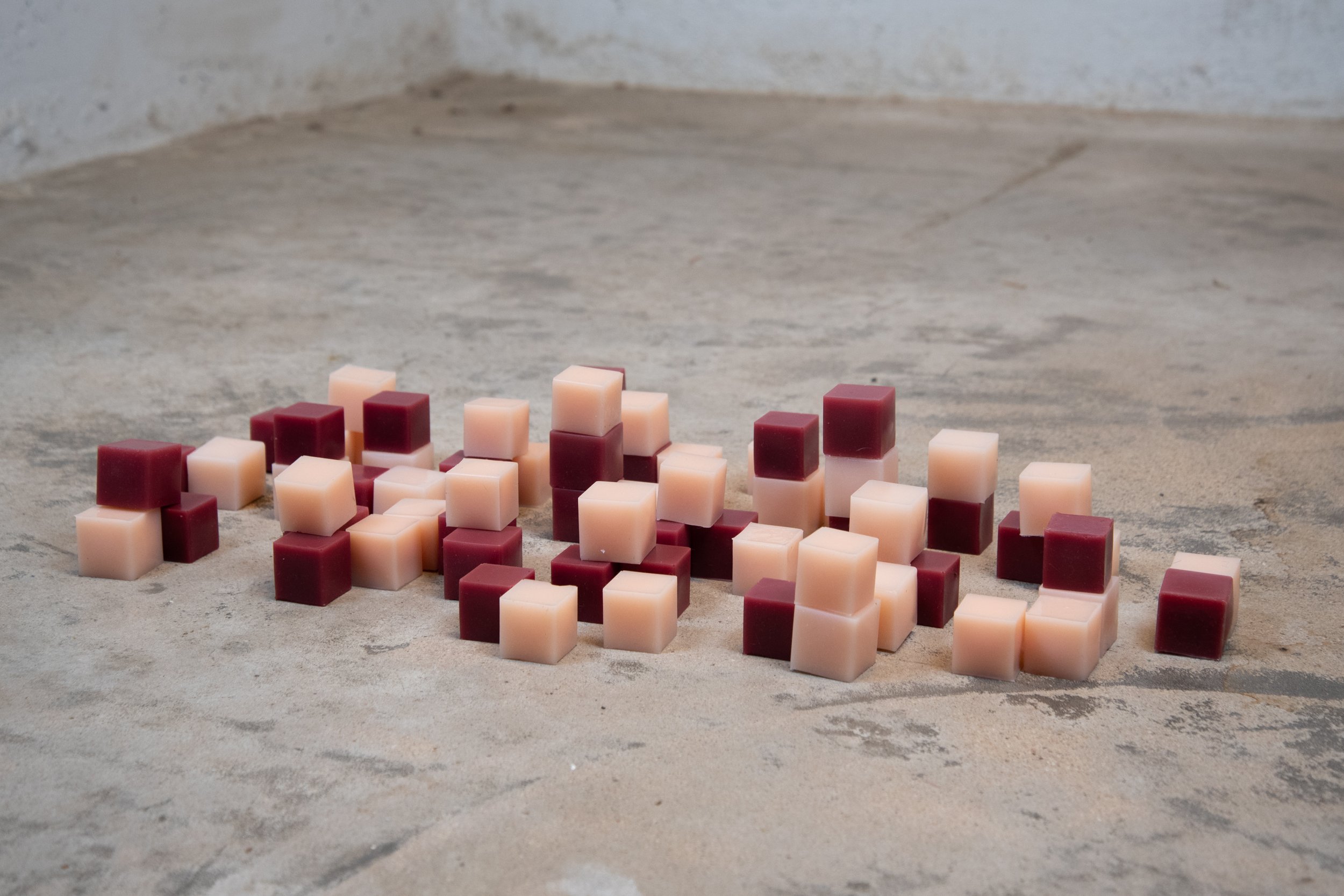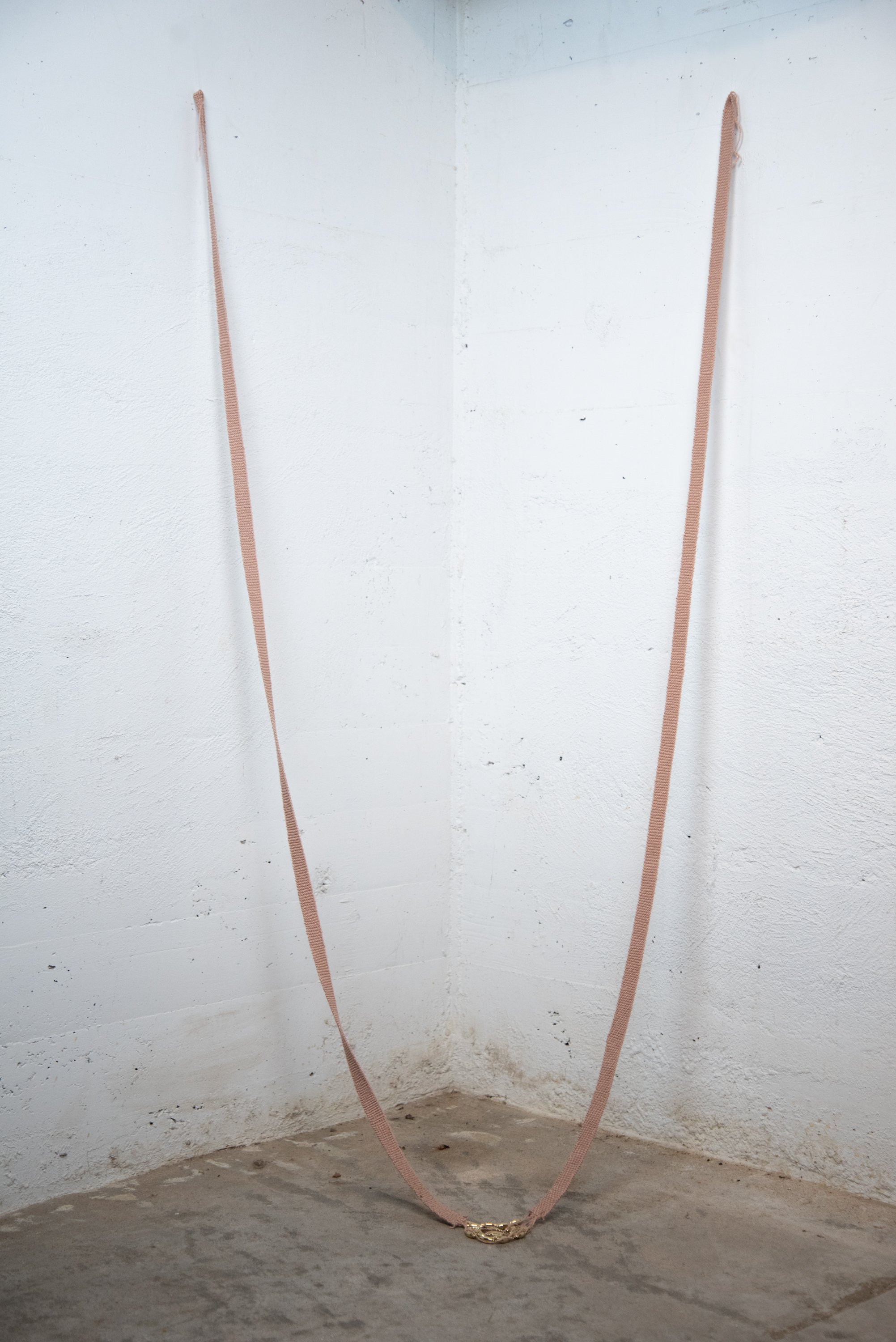




Stainless steel table, pasta shredder, pigmented silicone
2025
Resin, human hair
2025
The artist’s pillow, cotton thread, pigmented silicone, sewing pins
2025
Pigmented silicone
2024
Cotton yarn, copper fishing weights
2025
Chicken wire mesh, pigmented silicone
2025
Wire, tin foil, plaster bandages, acrylic paint, pigmented silicone
2025
Stainless steel table, pasta shredder, pigmented silicone
2025
Resin, human hair
2025
The artist’s pillow, cotton thread, pigmented silicone, sewing pins
2025
Pigmented silicone
2024
Cotton yarn, copper fishing weights
2025
Chicken wire mesh, pigmented silicone
2025
Wire, tin foil, plaster bandages, acrylic paint, pigmented silicone
2025